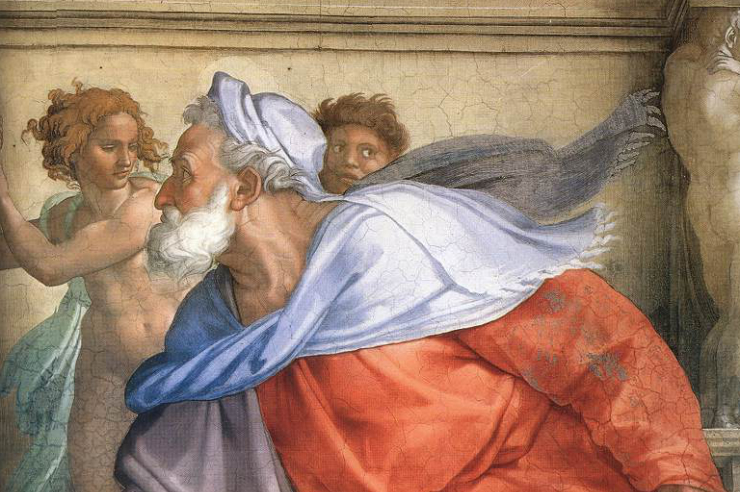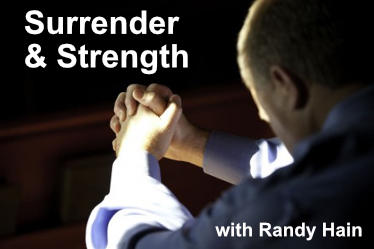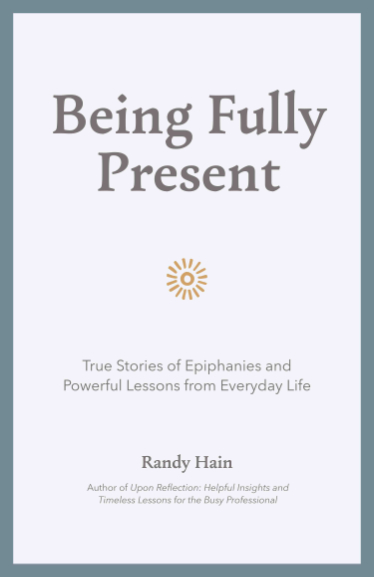“But, in my view, there is no greater story of conversion than that of St. Paul (Saul) on the road to Damascus, whose conversion we celebrated in the liturgy with a Feast Day this past week (January 25).”
“I have been crucified with Christ; it is no longer I who live, but Christ who lives in me; and the life I now live in the flesh I live by faith in the Son of God, who loved me and gave himself for me.”
– Galatians 2:20
Nearly everyone loves conversion stories. Right? Over the last couple of decades, the conversion stories of people who have entered the Catholic Church have exploded onto the scene in the form of compilations of short stories found in books such as Surprised by the Truth and more detailed accounts such as found in Scott and Kimberly Hahn’s Rome Sweet Home.
But no book contains more moving accounts of conversion and the life of faith than the Holy Bible. Let’s look at three of them…
THE STORY OF RUTH
For example, in the Old Testament, we can read the story of Ruth. The story begins with famine in Judah that led Elimelech, his wife Naomi and their two sons to move to Moab. Over their time in Moab, Elimelech died and his two sons married Moabite women. Eventually, the two sons also die, leaving three widows. When the famine ended in Judah, Naomi decided to return home and she encouraged her two daughters-in-law to return to their mothers’ homes and remain in their native land. One daughter-in-law, Orpah, stayed behind, but the other, Ruth, made a decision that would transform her life and play a prominent role in the history of Israel. Ruth’s confession of faith is one of the most moving in Scripture. Ruth said to her monther-in-law:
“Do not ask me to abandon or forsake you! for wherever you go I will go, wherever you lodge I will lodge, your people shall be my people, and your God my God. Wherever you die I will die, and there be buried. May the Lord do so and so to me, and more besides, if aught but death separates me from you!”
– Ruth 1:16-17
So Ruth accompanied Naomi to Bethlehem and eventually married Boaz, a kinsman of Naomi from her deceased husband’s family. They had a son and named him Obed who would go on to become the grandfather of King David.
Ruth’s “yes” to God’s call can be said to have been a forerunner of the “fiat” of Mary, the Mother of God. This powerful story, worthy of your reading and meditation, can be found in the book of Ruth. It is a story of a complete change from one culture to another, from one religion to another.
THE STORY OF KING DAVID
The Old Testament also has stories of another form of conversion, not from one faith to another, but a turning away from sin back to God. One such account concerns the conversion of King David. This is not a conversion story about a change from one religion to another, but of repentance. The event I am thinking of is the story of David’s great sin, his repentance and of God’s great mercy. At a time when King David waged a final battle against the Ammonites, he chose to remain behind in Jerusalem. As a forerunner to the Messiah, this was not a very king-like course of action—nor in general. He came to notice a woman, Bathsheba, the wife of Uriah, one of King David’s great warriors. David seduced Bathsheba and she conceived a son. In order to hide his sin from Uriah, David arranged the circumstances of battle to result in Uriah’s death and afterwards took Bathsheba for his wife. The prophet, Nathan, was sent to David to convict him on behalf of God of his evil. The baby boy conceived would die. David and Bathsheba would have another son who would become King Solomon.
So where is the conversion and repentance? You can read of King David’s repentance and plea for forgiveness in his hymn of contrition, the Miserere, Psalm 51—one of the seven Penitential Psalms:
“Have mercy on me, God, in your kindness; in your compassion blot out my offense. O wash me more and more from my guilt and cleanse me from my sin. My offenses truly I know them; my sin is always before me. Against you, you alone, have I sinned; what is evil in your sight I have done. That you may be justified when you give sentence and be without reproach when you judge, O see in guilt I was born, a sinner was I conceived… From my sins, turn away your face and blot out all my guilt. A pure heart create for me, O God, put a steadfast spirit within me. Do not cast me away from your presence, nor deprive me of your holy spirit. Give me again the joy of your help; with a spirit of fervor sustain me…”
– Psalm 51:1-5,9-12
Be sure to read the entirety of Psalm 51—it is prayed every Friday morning during Lauds (Morning Prayer) in the Church’s Liturgy of the Hours.
David’s story is most striking and important for us because Scripture describes David as a “man after God’s own heart.” All who seek God desire to be what David was, yet David fell tragically in sin. Who among us reading this article cannot relate at some level? Yet David’s great sin is not the end of the story. No matter what we may have done, no matter how much damage we may have caused, and no matter how greatly we have sinned, it is not too late to undergo conversion of heart, turning away from sin and back to God. God cherishes a contrite heart and His mercy is without measure. That is the point of the story of David’s fall from grace—that grace and salvation lost can be restored.
THE STORY OF SAINT PAUL
It is in the New Testament that we find many of the Bible’s conversion stories. The story of the Prodigal Son is a favorite of mine and as my friend, the late Fr. Dubay, once wrote, “it has the Divine handwriting all over it.” And of course there are other favorites, such as the Samaritan Woman at the Well and the Woman Caught in Adultery.
But, in my view, there is no greater story of conversion than that of St. Paul (Saul) on the road to Damascus, whose conversion we celebrated in the liturgy with a Feast Day this past week (January 25). Here is a powerful story of a conversion that radically changes the direction of one’s life… the story of a man who prior to his conversion was absolutely convinced of the rightness of his former life and actions.
We learn of St. Paul primarily from two sources—the Book of Acts and his “undisputed” New Testament Epistles: 1 Thessalonians, Galatians, Philippians, 1 and 2 Corinthians and Romans. We learn that Saul was a Pharisee, a priest of the Tribe of Benjamin and a citizen of Rome who also went by the name, Paul. That he loved God and his Jewish faith there can be no question. He studied at the feet of the great rabbi, Gama′li-el. Writing about his conversion,
St. Paul tells us a bit about his former life.
“For you heard of my former way of life in Judaism, how I persecuted the church of God beyond measure and tried to destroy it, and progressed in Judaism beyond many of my contemporaries among my race, since I was even more a zealot for my ancestral traditions.”
– Galatians 1:13-14)
Saul persecuted the early church and held the coats of the men who stoned to death the Church’s first martyr, St. Stephen the Deacon. It was on the road to Damascus, the city to which he was traveling for the purpose of arresting more Christians, that Saul experienced his conversion. Popular tradition and classic religious art portrays Saul being knocked down from his horse. So powerful is his conversion and the story about it that many refer to their own “Damascus Road Experience.” We celebrate the Feast of the Conversion of St. Paul each January 25.
WHAT CAN WE LEARN FROM ST. PAUL’S DAMASCUS ROAD EXPERIENCE?
There are many important points to be gleaned from a study of St. Paul’s conversion that are relevant to our lives today; enough to fill a life-time of reflection. Let’s focus on just a few.
- Pride (and self-sufficiency) goeth before the fall… We are told by St. Teresa of Avila that one who would advance in the spiritual life must spend much time in the practice of humility. A prideful person, no matter how pure he believes his intentions to be, is often led by his own distorted image of the Truth. There is no evidence that St. Paul ever heard Jesus teach prior to the Crucifixion, but like others who lived in the 1st century, and despite his zeal for the Law and the Prophets, St. Paul lived in the spiritual darkness of his times and failed to recognize Jesus as the long-awaited and promised Messiah prior to his conversion. I don’t know if this fits St. Paul precisely, but I can relate to that certainty of over-confidence and self-sufficiency that leads to one being closed to the Truth.
- True Conversion Requires Surrender… How many times has the opportunity to experience true conversion been undone by an unwillingness to let go and surrender? Even when we know we are wrong about something, what is it about human nature that leads one to cling to his old ways and desires? Is it a fear of losing something—control, prestige, acclaim, possessions, standing, etc.? How many times has one entered the confessional and confessed even everything, yet then walked out carrying the same old heavy load of sin and guilt that God desires to be left behind? What ever form it takes, we must surrender our very selves to God so that it is “no longer I who live, but Christ who lives in me.” St. Paul had to be blinded in order to see. He had to accept that by persecuting Christians, he was persecuting his God. He had to be willing to learn yet more than he had already learned, even to “unlearn” some things he held dear.
- Conversion is not a one-time, past event… St. Paul willingly was led by others into Damascus where he met and was healed and baptized by Ananias. After a few unsuccessful forrays into the local synagogue, St. Paul came to relaize that he needed to take time for formation and growth in grace, so he spent three years in prayer and growth in the spiritual life in Arabia—and even that was just the start. Initial conversion did not bring to an end his need for growth, it was the beginning. He would write, “I drive my body and train it, for fear that, after having preached to others, I myself should be disqualified” (1 Corinthians 9:27). Nor did it bring to an end his suffering and toil, “The Spirit itself bears witness with our spirit that we are children of God, and if children, then heirs, heirs of God and joint heirs with Christ, if only we suffer with him so that we may also be glorified with him” (Romans 8:16-17). Conversion is a life-long endeavor that requires us to “work out our salvation with fear and trembling.”
- Conversion is a complete turn in another direction… To experience true conversion, we must be totally honest with God and ourselves. There can be no half measures. Nothing is more clear than the difference between the life led by St. Paul before and after his conversion. Our new life in Christ must become the highest priority in our life’s work. This change must involve our whole life. We cannot be faithful at Church and unfaithful elsewhere. To be so, is in reality to be unfaithful everywhere. Integrating our faith throughout our home, work and public lives is an absolute necessity. We cannot serve two masters and we cannot live double lives—not if we want to follow Christ.
May the Good God, the “Giver of all that is Good,” help us to open our minds and our hearts to all that he calls us to be and do in this life so as to be with Him in the life to come. And may the example of St. Paul and all whose conversion stories are recorded in Sacred Scripture teach and inspire us to that end.
Into the deep…
Image credit: “The Conversion of St. Paul” (detail) José Ferraz de Almeida Júnior, Public domain, via Wikimedia Commons
A popular and engaging speaker, Deacon Bickerstaff is available to speak at your parish or event. Be sure to check out his Speaker Page to learn more. Into the Deep is a regular feature of the The Integrated Catholic Life™.
Please help spread the Gospel. Share this article with family and friends on Facebook and other social media.














